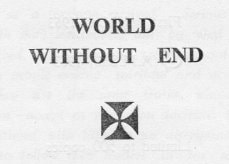|
The drawing below is from one of Alan Bain’s notebooks, showing a version of the extended tree with annotations. Some annotations are explained in his book The Keys to Kabbalah, and others are discussed in this article. The drawing is seemingly titled ‘The Temple’ and might also represent the floor plan of a cathedral or Egyptian temple: in his book Alan argued that the extended tree geometry could be found in floor plans of both. Alan Bain was one of the founders of the Soho Cabbalists in the late 1950s, but this drawing would have come much later, perhaps in the 1970s or even the 1990s. The concept of the extended tree – showing how the tree of life glyph in the four worlds can fit together – was discovered in the early 1970s, as discussed by Cherry Gilchrist in her article The Extended Tree: modern forms of the Kabbalistic Tree of Life and their origins. Alan worked with the extended tree and developed a system where the three veils of negative existence and the 29 sephiroth of the extended tree were related to the 32 paths of wisdom. In the drawing we see this numbering running down the tree in the order of the lightning flash: Paths 1, 2 and 3 are the veils of negative existence. Paths 4-10 are shown as the seal of Solomon. In between paths 11 and 12 (Netzach and Hod in Atziluth), is the Jerusalem Cross that Alan used as an emblem of his work with The Order of the Temple (a Templar group that he established) and The Community of Christ Chapel, a community which Alan established that celebrated services within the precincts of the Theosophical Society in Bristol. Paths 13 to 19 form a Maltese cross centred on path 16, the Kether of Yetzirah, which Alan saw as the station of the priesthood in the Christian Church. This cross has four arms, and eight (or twelve) points. It is similar to the cross patté used by Alan in early days as an emblem for the Temple Association: Paths 19 to 28 are joined together by the ‘21 stages’ that Alan discusses in his book. Of the remaining paths (note that Path 32 is missing from the bottom of the picture!), Alan says “The remaining Paths form the cross of matter from which humanity (Heb: Adam) is to be redeemed via Tiphareth.” Hebrew annotation The Hebrew annotation on the right of the diagram represents the Great Commandment of Christ (Mark 12:28–34) as also found in the Old Testament: Deuteronomy 6:4 Hear, O Israel: the LORD our God, the LORD is one. Deuteronomy 6:5 And thou shalt love the LORD thy God with all thy heart, and with all thy soul, and with all thy might. Leviticus 19:18 [… and] thou shalt love thy neighbour as thyself: I am the LORD. Other annotation Details of other annotation of the drawing can be found in Alan’s book: The association of the Tarot Trumps with paths 11-32 (shown in Roman numerals). The Greater Sephiroth (on the left hand of the drawing). Alan treated the sephiroth on the central pillar as centres of ‘greater sephiroth’. So for example, the 16th path is at the centre of the greater sephira of Geburah, which also incorporates paths 13, 14, 15, 17, 18 and 19. The association of the Hebrew letters with the 32 paths, following the Sepher Yetzirah: Paths 2-4: the three mother letters. Paths 4-10: the six seals of the fathers. Paths 10-16: the seven double letters (and the planets). Paths 17-28: the twelve double letters (and the zodiac). Rod Thorn
3 Comments
Rowena Money (Nee Bain)
14/3/2023 12:59:53 am
Just curious to know how you got hold of Alan Bain's drawings etc. and how you know/knew him?
Reply
Rod Thorn
15/3/2023 07:11:29 am
Hi Rowena - I will email you!
Reply
15/3/2023 01:34:23 pm
Me got my version of same more mathematical
Reply
Leave a Reply. |
AuthorsArticles are mostly written by Cherry and Rod, with some guest posts. See the bottom of the About page for more. A guide to all previously-posted blogs and their topics on Soho Tree can be found here:
Blog Contents |
Proudly powered by Weebly




 RSS Feed
RSS Feed